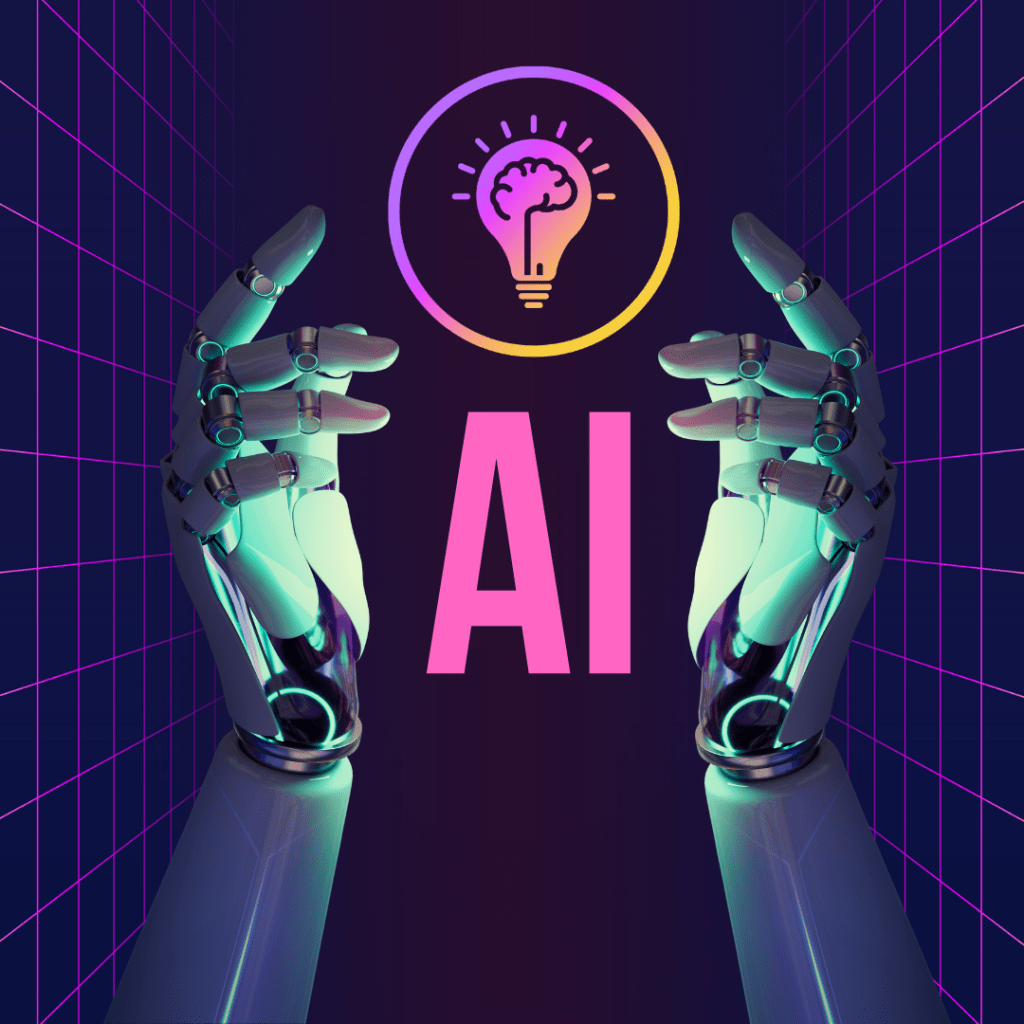Scope of Artificial Intelligence (AI) and Machine Learning (ML).
What is AI?
AI is the development of computer systems that can perform tasks that would typically require human intelligence, such as learning, reasoning, problem solving, perception, understanding natural language and even interacting with the environment.
Artificial Intelligence (AI) is a way of associating features such as Learning, motion, etc. that human beings posses with a robot with a computer or a computer-controlled robot.
The goal of artificial intelligence is to create systems that can mimic human cognitive abilities in order to automate tasks, make informed decisions and solve complex problems.
Scope of AI
- Transport
In the field of road transportation, artificial intelligence (AI) technologies are used to analyze the volume and pattern of traffic as well as to maintain traffic flow through the use of real-time rotating traffic signal and lights.
- Teaching
AI plays a crucial role in both assisting students and enabling teachers to create high-quality educational content. AI can effectively examine and generate educational material, reducing the effort and time required by teachers.
- Cyber Security
AI can help you protect your company online. Using AI & Cyber Security, you can detect frauds and odd activities of particular users in no time. You can use AI to simulate harmful attacks and mitigate the opportunity to steal personal data.
- Marketing
AI can help you gather data about your target audience, their needs and what they’re likely to buy which can help create more targeted and personalized marketing campaigns.
- Customer Service
AI Powered tools can read user’s messages, analyze their requests, and provide helpful responses.
Some interesting facts about Artificial Intelligence
- The autonomous vehicle market is being driven by AI
- AI is already making the connected home better
- Products you buy are being suggested to you by AI
- The AI processor battle has started
What is ML?
Machine Learning requires structured data as input to learn from and make predictions or decisions. The main idea behind learning is to allow computers to learn and adapt from experience, without requiring explicit programming for every possible scenario.
ML algorithms can detect patterns and relationships in data and the use these patterns to make informed predictions, classifications, or decisions. Instead of being explicitly programmed to perform certain
tasks, ML algorithms use patterns and data to their performance over time.
Types of ML
- Supervised Learning
- Un-supervised learning
- Reinforcement Learning
- Semi-supervised Learning
Supervised Learning
In supervised learning, the goal is for the algorithm to learn the mapping between inputs and outputs so that it can make predictions or classifications on new, unseen data.
Unsupervised Learning:
Unsupervised learning involves training an algorithm on data without labeled outputs. The goal here is to find patterns, structures, or groupings within the data.
Reinforcement Learning:
Reinforcement learning is a type of learning where an agent learns to make decisions by performing actions in an environment and receiving feedback in the form of rewards or penalties.
Semi-supervised Learning
The algorithm is trained on a mix of labeled and unlabeled data, utilizing the labeled data to guide its understanding of the unlabeled data.
Scope of ML
The scope of Machine Learning (ML) is vast and continually expanding as technology advances and more applications are discovered. ML has already made significant contributions across various industries and fields, and its potential for future growth is substantial. Here are some of the key areas where ML has a significant scope:
- Business and Finance
Fraud Detection: ML algorithms can identify patterns of fraudulent behavior in financial transactions.
Credit Scoring: ML can be used to assess creditworthiness by analyzing credit histories and other data.
Algorithmic Trading: ML algorithms can analyze market data to make trading decisions.
Customer Insights: ML helps analyze customer behavior and preferences for better marketing strategies. - Healthcare and Medicine
Medical Imaging: ML aids in analyzing medical images for diagnosis and treatment planning.
Drug Discovery: ML accelerates the discovery of new drugs by predicting molecular interactions.
Personalized Medicine: ML helps tailor treatments based on patient data and genetics.
Health Monitoring: ML enables remote monitoring of patient health and early detection of anomalies.
- Retail and E-commerce:
Recommendation Systems: ML algorithms suggest products to customers based on their preferences and browsing history.
Demand Forecasting: ML predicts future demand for products, optimizing inventory management.
Price Optimization: ML helps set optimal prices by analyzing market dynamics and customer behavior.
- Natural Language Processing (NLP):
Chatbots and Virtual Assistants: ML powers conversational AI for customer support and information retrieval.
Language Translation: ML models like neural machine translation enable accurate language translation.
Sentiment Analysis: ML determines public sentiment towards products, services, or topics.
- Automotive and Transportation:
Self-Driving Cars: ML algorithms process sensor data to enable autonomous navigation.
Traffic Prediction: ML predicts traffic conditions, optimizing route planning and navigation.
Vehicle Diagnostics: ML helps diagnose vehicle issues through data analysis.
- Manufacturing and Industry:
Quality Control: ML identifies defects in products during manufacturing processes.
Predictive Maintenance: ML predicts equipment failures, reducing downtime in industrial settings.
Supply Chain Optimization: ML optimizes logistics and supply chain operations.
- Energy and Utilities:
Energy Consumption Prediction: ML models forecast energy usage, aiding in resource allocation.
Smart Grid Management: ML optimizes energy distribution and consumption in smart grids.
- Agriculture:
Precision Agriculture: ML aids in crop monitoring, disease detection, and yield optimization.
Animal Health Monitoring: ML helps track and manage livestock health.
- Entertainment and Media:
Content Recommendation: ML suggests movies, shows, and music based on user preferences.
Content Generation: ML can generate text, images, and even music compositions.
- Environmental Monitoring:
Climate Modeling: ML contributes to climate prediction and modeling.
Species Identification: ML aids in identifying plants and animals for biodiversity monitoring.
Intern Samiksha Jadhav
(Mern Stack Developer)

